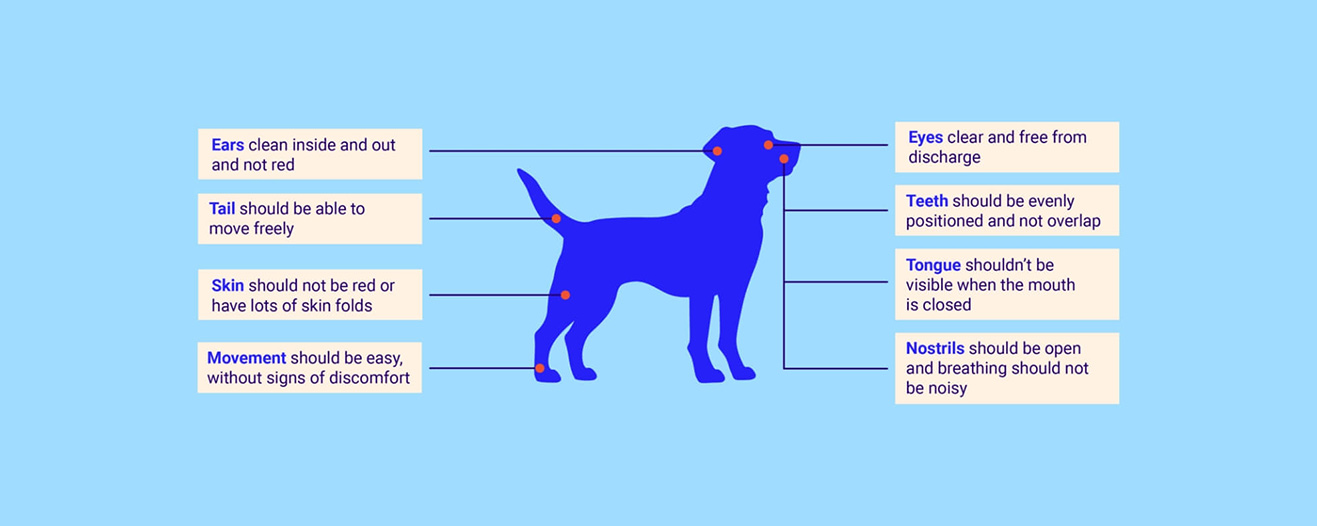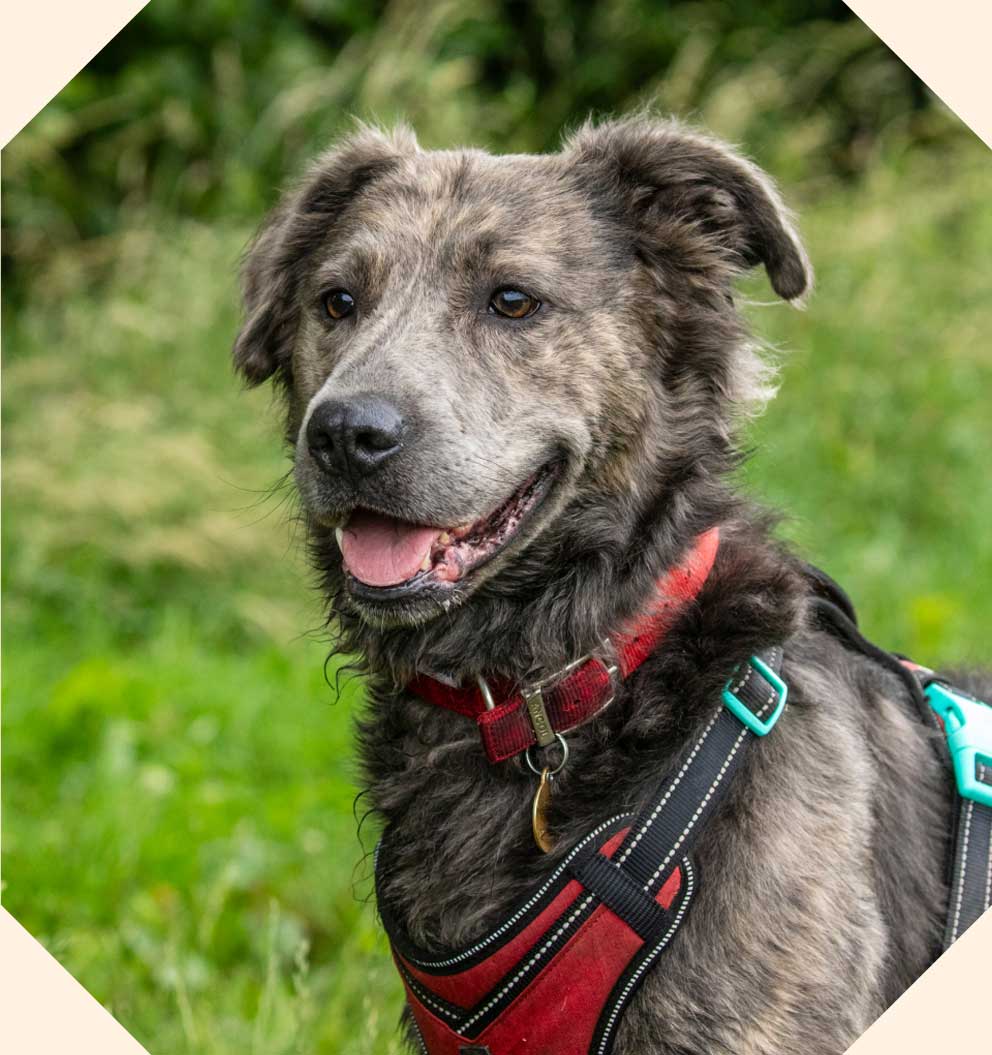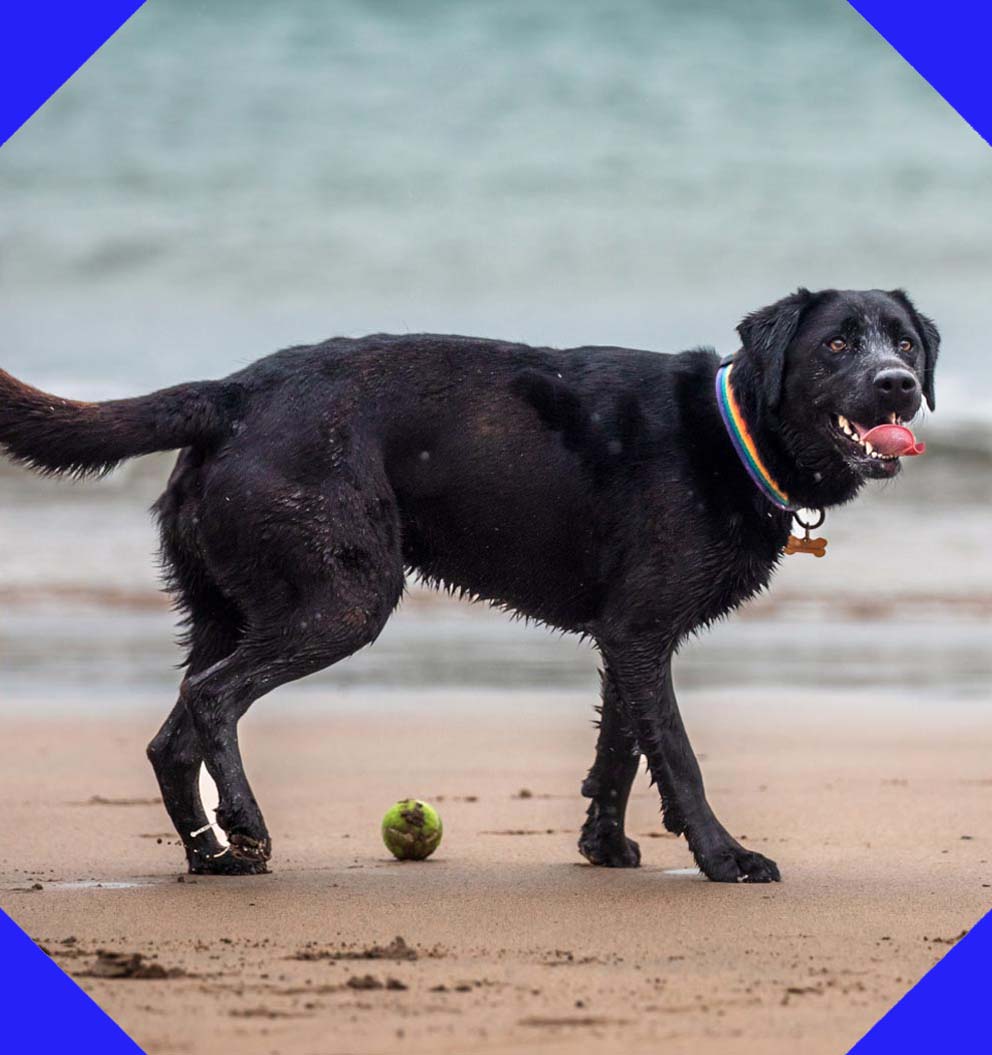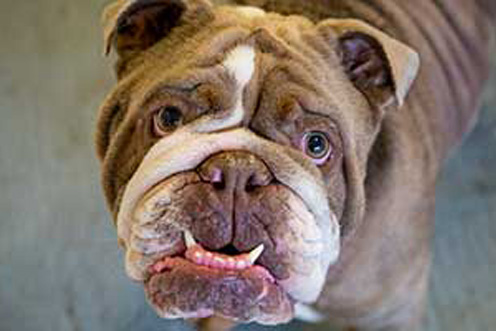Finding the best dog for your family is a huge task, and of the many attributes we hope our furry best friend will have, the most important is good health.
Poor health can limit our pet’s lifespan and their ability to live a pain free, stress free life, which is emotionally devastating. It can also affect how we're able to care for and bond with them, and can put a strain on our finances.

Head area
Nose
Small or closed nostrils can severely impact airflow and impact your dog’s ability to exercise normally, regulate their own temperature, and sleep comfortably. A healthy nose should show open (rather than narrow) nostrils, and a healthy dog should breathe quietly and not snort or sound distressed.
Snout
A protruding snout - where a dog’s muzzle protrudes forward from the eyes - is a healthy snout, helping the dog breathe properly.
Skin
Skin around the face should not be excessive or too loose. Excessive skin and wrinkles can lead to skin problems including infections.
Eyes
A dog’s eyelids should not bulge, roll outwards (ectropion) or inwards (entropion). These eye conditions can cause irritation, redness, inflammation and painful infections.
Ectropion: the lower eyelids roll outwards and look droopy.
Entropion: the eyelid rolls inward, causing the eyes to become irritated by the dog’s eyelashes and fur.
Also lookout for cherry eye, a condition where the pink inner eye area is bulging, and skin folds around the eyes obstructing or touching the eye.
Ears
Ears should always show a clean and open ear canal. Ears should not touch the ground and impact your dog’s ability to walk, and should not be cropped, as this is illegal unless required by a registered veterinary surgeon for medical reasons.
For dogs with ear flaps, look out for injury to the ear flap, head shaking, excessive scratching, a strong smell and any redness.
Mouth, jaw and teeth
Keeping an eye on your dog’s teeth is important, so look out for constant drooling, a very undershot/overshot jaw and a tongue that sticks out most, or all, of the time.
Teeth should be nicely aligned, should not overlap with the ones next to them, or be visible when your dog’s mouth is closed. Don’t forget to check your dog’s gums for any redness (inflammation) or other changes.
If you have a puppy, their teeth will go through natural developmental so they might change over time.

Body area
Back and legs
Sadly, some dogs can suffer from painful spinal deformities due to the way they have been bred.
A healthy spine should gently curve downwards from behind the shoulders to gently rise upwards to meet the hips. You should not be able to see a humped, twisted or excessively curved back.
Backs should not be too long as this can cause painful issues that affect their ability to function normally, make your dog reluctant to jump or use stairs, and cause urinary or faecal incontinence.
Front legs should be as straight as possible, not bowed. Back legs should be straight and not point inwards at the joints (known as ‘cow hocks’).
For dogs with short legs, there should be visible space between the body and the ground when standing or walking, and the length of their back should be balanced with the length of their legs.
Coat
Your dog’s coat is crucial to help them live comfortably, and manage natural environmental factors such as extreme temperatures.
A dog’s coat should cover most of its body, not have excessive skin folds or wrinkles, and should not interfere with their function or movement.
Signs to watch out for include: Redness, irritation and strong odours from the skin folds (this could be an infection). Check areas such as the face, chin, legs (especially for dogs with short legs), around the tail area, and the vulva (for females).
Tail
A tail should be able to move freely and comfortably, allowing your dog to express their emotions and communicate with you and other animals. Tails should not be docked, as this is illegal unless required by a registered veterinary surgeon for medical reasons.
Watch out for inverted tails, skin folds, tight tails or a screw tail. Health problems include infections.

Don’t prioritise breed over health
Certain breeds are bred for their physical attributes, known as ‘conformations’, which can lead breeders to prioritise appearance over the health of the dog. An example of this is the brachycephalic (flat-faced) breed, commonly known for their short noses (snouts) and wrinkled faces. The way these animals are bred can mean a lifetime of suffering with a variety of debilitating illnesses, and a shorter lifespan. Their ‘cute’ features represent an animal welfare crisis.
For more information on extreme breeding and to help us protect future generations of animals, please explore our campaign.
Choosing the right dog
Choosing the right dog is a very personal decision, and should be based on positive interactions and your individual bond with a dog, rather than looks or ‘breed type’. Just like humans, every dog is an individual with their own needs. It’s important to consider your own lifestyle and habits, to make sure they fit with your potential pet’s behavioural and physical needs.
We recommend spending time researching the right dog for you, and wherever possible, spending quality time with the animal.




